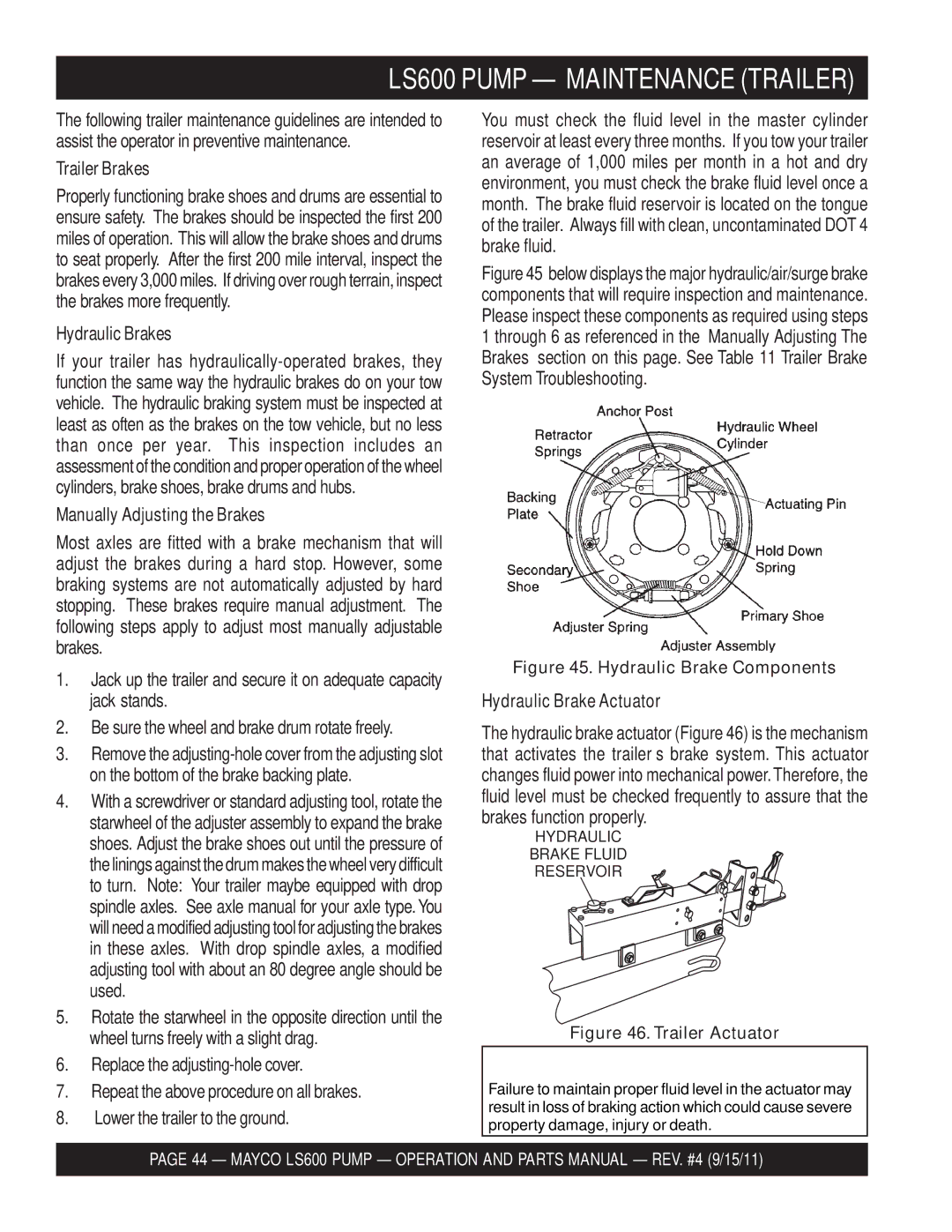LS600 specifications
The Multiquip LS600 is a robust and efficient light tower designed to provide reliable lighting solutions for various applications, including construction sites, outdoor events, and emergency services. This advanced model blends cutting-edge technologies with user-friendly features, ensuring that users have the illumination needed to get the job done safely and effectively.At the heart of the LS600 is its powerful lighting system, which utilizes four high-efficiency LED lights. These lights deliver an impressive total output of up to 600,000 lumens, providing extensive coverage and bright illumination across large areas. The energy-efficient LEDs not only offer superior brightness but also contribute to lower operational costs and extended run times compared to traditional lighting systems.
One of the standout features of the LS600 is its extendable mast. The mast can be raised to a height of 30 feet, allowing the lights to be positioned at an optimal height for maximum visibility. This flexibility is essential for overcoming obstacles and ensuring that all areas are uniformly lit. The mast is also designed for quick and easy deployment, enabling users to set up the light tower rapidly and focus on their primary tasks.
The LS600 is powered by a reliable and fuel-efficient diesel engine, which provides consistent performance even in demanding conditions. The engine is equipped with advanced technologies to enhance fuel efficiency and reduce emissions, making it an environmentally friendly option for users who are conscious of their carbon footprint. The light tower has a long run time, capable of operating for extended periods without the need for frequent refueling.
Portability is another key characteristic of the Multiquip LS600. The unit is designed with a rugged frame and sturdy wheels, allowing for easy transport across various terrains. This mobility is complemented by a compact design that facilitates storage and handling, making it an ideal choice for rental companies and contractors.
In conclusion, the Multiquip LS600 stands out as a versatile and powerful light tower, engineered to deliver exceptional performance and reliability. Its high-lumen LED lighting, extendable mast, robust diesel engine, and portability make it a top choice for those in need of dependable lighting solutions in challenging conditions. Whether illuminating a busy construction site or enhancing safety at an outdoor event, the LS600 is equipped to handle a wide range of lighting demands with efficiency and ease.

